You can fix Bluetooth wearable interference by positioning your devices within 1-3 meters of paired equipment while maintaining clear line-of-sight and avoiding thick clothing or metallic accessories. Configure your router to prioritize 5 GHz bands and enable Smart Frequency Selection to reduce 2.4 GHz conflicts that plague gym environments. Upgrade to Bluetooth 5.0 devices for four times the range and adaptive frequency hopping that maintains stable connections in crowded spaces. These foundational strategies will transform your workout experience.
Optimize Device Positioning and Physical Proximity
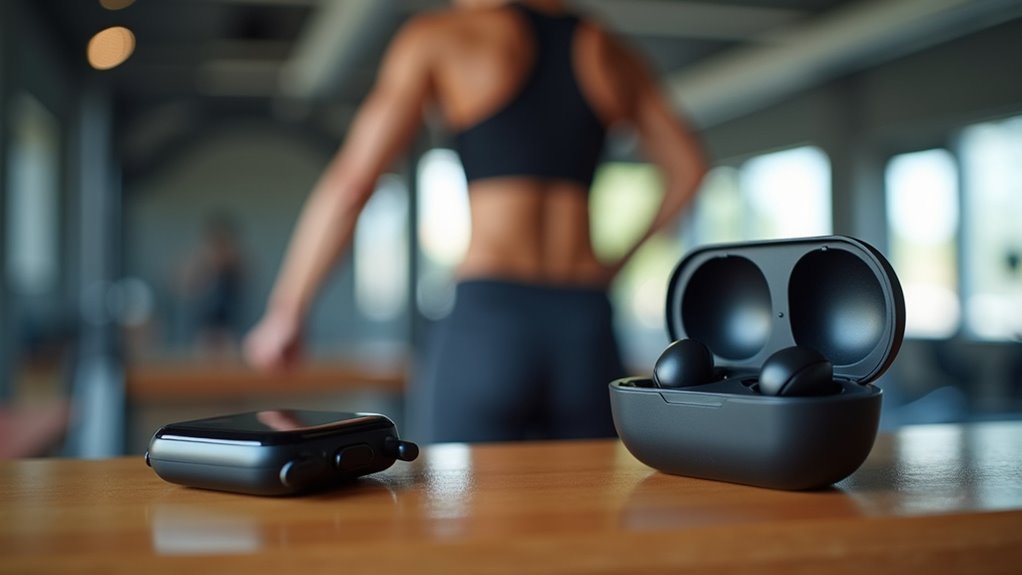
When your Bluetooth wearable consistently drops connections or delivers choppy data during gym sessions, the solution often lies in strategic device positioning and proximity management.
Position your device where it has clear line-of-sight to paired equipment, typically within 1-3 meters of smartphones or gym machines. Avoid placing wearables under thick clothing or near metallic accessories that’ll attenuate signals.
Keep devices away from areas with dense electronic clustering to reduce interference. If you’re wearing multiple Bluetooth devices, space them apart—try one on each wrist or ankle to distribute transmissions evenly.
Remove wearables from bags or pockets, and wear them on limbs rather than your torso when gym equipment creates signal blockages. BLE operates most effectively within its optimal 0-25 meter range, making proximity management crucial for maintaining stable connections.
Strategic positioning dramatically improves connection stability.
Manage Frequency Conflicts With Smart Router Settings
Since Bluetooth and Wi-Fi both operate in the 2.4 GHz frequency spectrum, your gym’s router settings can make or break your wearable’s connection stability.
Switch your router to prioritize the 5 GHz band, which offers cleaner channels with less Bluetooth interference. Configure dual-band routers to automatically steer devices toward 5 GHz connections, especially for interference-sensitive equipment.
Prioritize 5 GHz bands on dual-band routers to reduce Bluetooth interference and improve wearable device connectivity in crowded frequency environments.
Manually adjust your Wi-Fi channel within the 2.4 GHz band to avoid overlapping frequencies. Use your router’s automatic channel scanning function to find the least congested option.
Enable Smart or Dynamic Frequency Selection (DFS) features that automatically detect and avoid busy channels. Some routers realign channels after rebooting, so restart periodically.
Turn off 2.4 GHz entirely when possible to eliminate signal clashes completely. Position your wearable devices closer to the router to enhance Wi-Fi strength and improve overall connection reliability.
Leverage Advanced Bluetooth Technologies and Updates
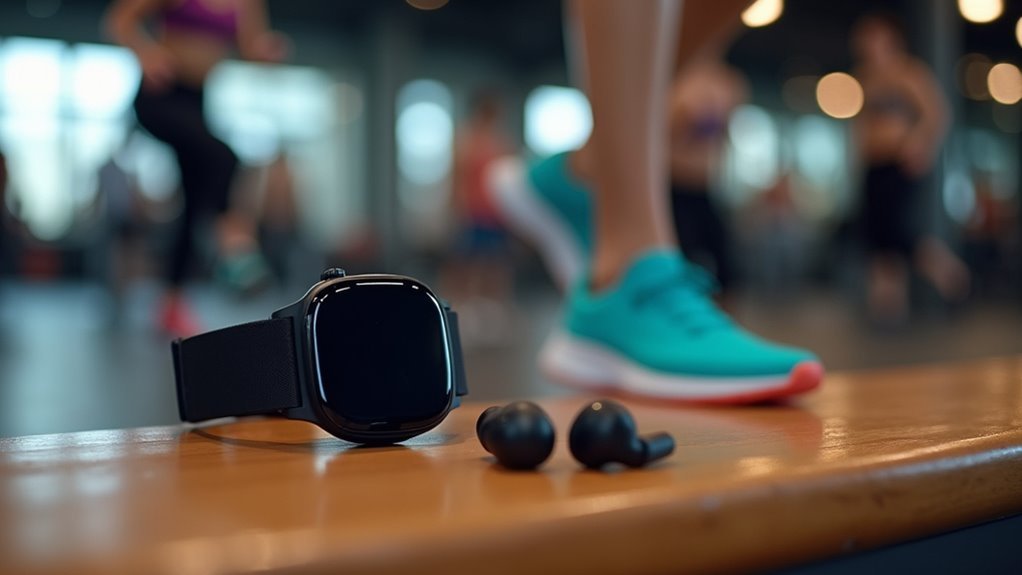
While router adjustments help minimize interference, upgrading to the latest Bluetooth standards delivers the most significant improvement for wearable connectivity in challenging gym environments.
Bluetooth 5.0 provides four times the range and two times the speed of previous versions, ensuring your wearables maintain stable connections even in large facilities. The enhanced broadcasting capacity handles multiple simultaneous connections without dropouts during intense workouts.
You’ll benefit from advanced power management that extends battery life and reduces charging frequency. Modern BLE modules use adaptive frequency hopping to maintain connections in crowded gyms while consuming minimal energy.
Security upgrades protect your health data through advanced encryption and secure authentication. These improvements work together to eliminate the frustrating disconnections that plague older Bluetooth devices in interference-heavy gym environments. Modern wearables with ultra-low transmit power consumption can operate reliably for up to ten years on a single battery charge.
Frequently Asked Questions
Why Does My Heart Rate Monitor Show Incorrect Readings During Peak Gym Hours?
Your heart rate monitor shows incorrect readings during peak gym hours because crowded equipment creates electromagnetic interference, multiple users’ devices cause signal overlap, and increased wireless congestion disrupts your monitor’s Bluetooth connection accuracy.
Can Certain Gym Equipment Cause More Bluetooth Interference Than Others?
Yes, you’ll find treadmills and weight machines with metal frames cause more interference than basic equipment. Cardio machines with electronic displays and built-in Bluetooth create competing signals that disrupt your wearables.
Does Wearing Multiple Fitness Trackers Simultaneously Increase Interference Problems?
Yes, you’ll experience increased interference when wearing multiple fitness trackers. They compete for the same 2.4 GHz spectrum, occasionally overlap frequencies, and can cause connection drops or syncing delays between devices.
How Can I Identify Which Specific Device Is Causing My Connectivity Issues?
You’ll need to isolate each device systematically by turning them off one at a time, then monitor your connection stability. Use Bluetooth sniffers or network monitors to analyze traffic patterns and pinpoint the interference source.
Are There Designated Gym Areas With Better Bluetooth Signal Quality?
You’ll find better Bluetooth signal quality in open gym areas with fewer metal machines, near equipment-free zones, and away from crowded spaces where multiple devices create interference.
In Summary
You’ve learned three effective strategies to eliminate bluetooth interference at the gym. By adjusting your device’s position, managing router frequency conflicts, and utilizing advanced bluetooth features, you’ll experience seamless connectivity during workouts. Don’t let technical issues disrupt your fitness routine anymore. Apply these solutions consistently, and you’ll enjoy uninterrupted music streaming and accurate fitness tracking. Your gym sessions will become more productive and enjoyable with reliable bluetooth performance.

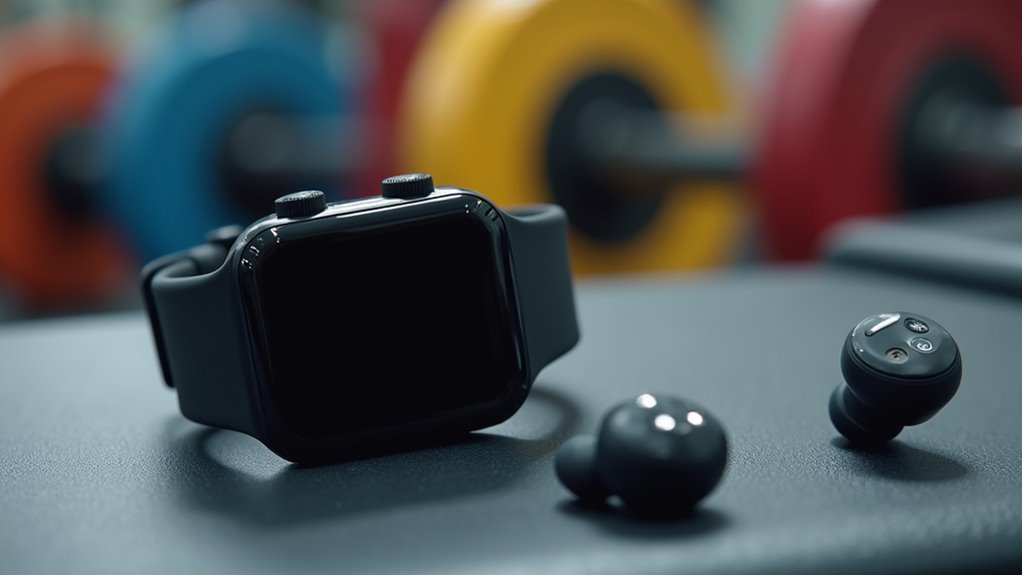

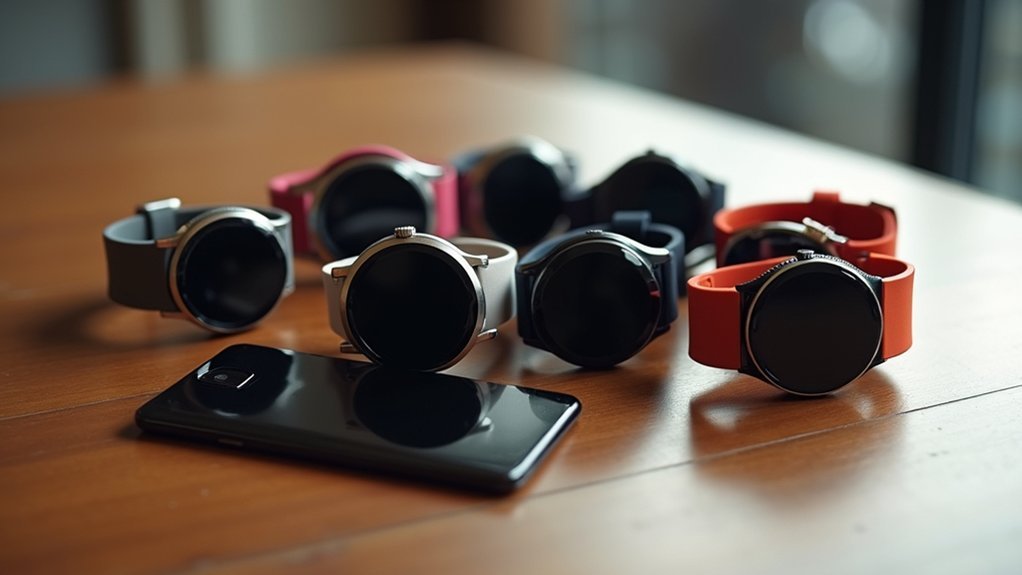
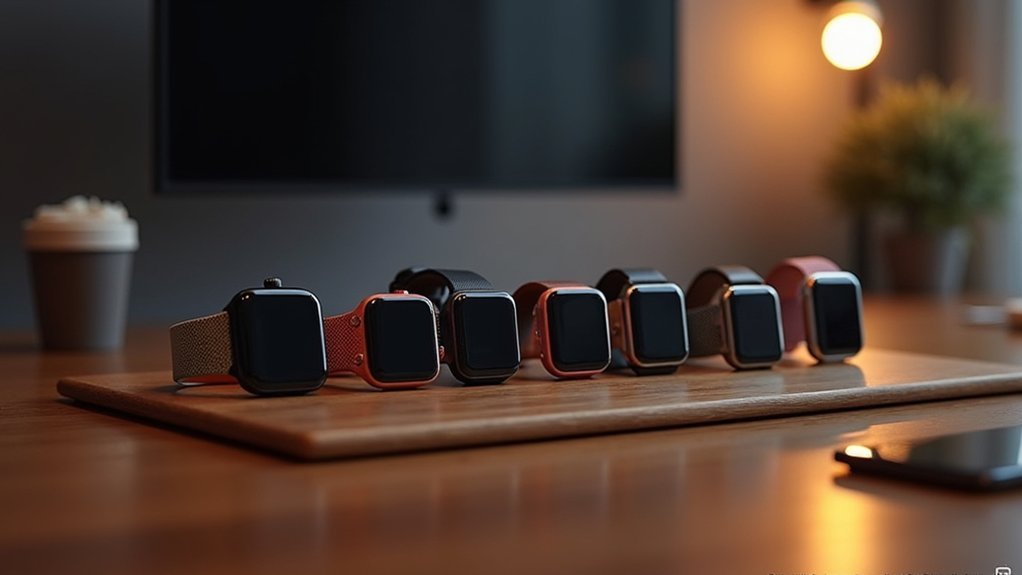
Leave a Reply